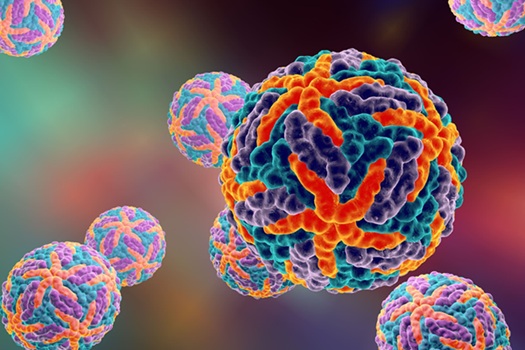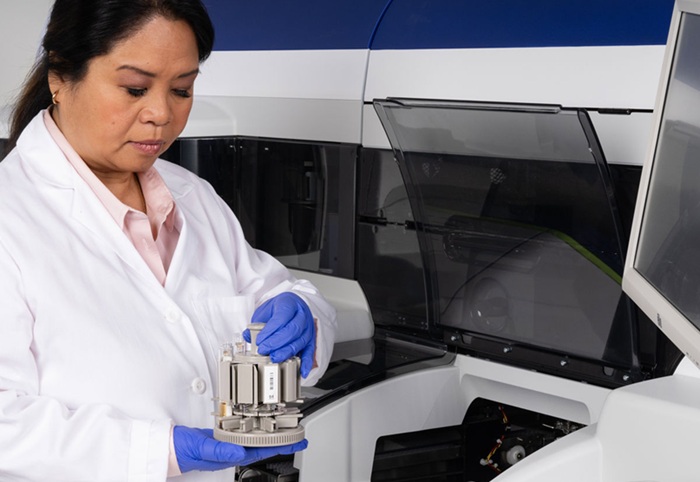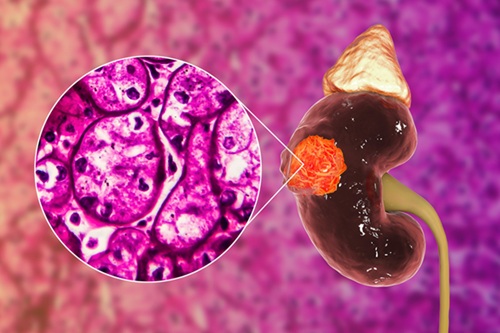Global Blood Gas and Electrolyte Analyzers Market to Reach USD 985 Million by 2026
|
By LabMedica International staff writers Posted on 30 Jun 2021 |

Illustration
The global blood gas and electrolyte analyzers market is projected to grow at a CAGR of 5.1% from an estimated USD 728.7 million in 2020 to USD 985 million by 2026, driven by improving infrastructure in diagnostic centers, hospitals and clinical laboratories, and a rise in the integration of critical equipment such as analyzers in ICUs, NICUs, and emergency and trauma units.
These are the latest findings of a new market study published by Global Industry Analysts Inc., (San Jose, CA, USA), a market research company.
Blood gas and electrolyte analyzers are commonly used to test numerous parameters in the blood for identifying drug consumption, diabetes and blood vessel hemorrhage. The growth of the global blood gas and electrolyte analyzers market is being significantly boosted by the rising number of patients in critical care units and intensive care units (ICU); and the increasing demand for integrated, high-throughput systems that measure multiple parameters (such as creatinine, urea, nitrogen) in a short time, which is crucial for emergency situations. Another growth driver for the global market is the increasing adoption of these devices across hospitals, emergency wards and diagnostic centers. The growing relevance of point-of-care diagnosis within the healthcare industry due to its numerous advantages such as bedside care is poised to propel the market demand. Increasing spending on handheld, compact blood gas analyzers offering faster results and addressing needs of critical care services, operation rooms and emergency healthcare services will further boost global demand.
The Portable segment is projected to record a 5.8% CAGR to reach USD 681.6 million in 2026, while the Benchtop segment is expected to grow at a CAGR of 3.8% CAGR over the analysis period. The growing penetration of Point-of-Care (PoC) patient monitoring instruments, coupled with continued innovations and technology improvements taking place in the portable/handheld blood gas analyzers, is encouraging end users to switch over to the PoC version. Benchtop blood gas analyzer, also known as central laboratory analyzer, is generally placed in central laboratories of large hospitals, to undertake high volumes of blood gas testing. Due to the time critical nature of blood gas tests, especially in critical care departments, benchtop analyzers are moving out of the central laboratory and are being placed in near-patient locations in critical care areas such as ICU, CCU, ED, and OR.
Geographically, the US blood gas and electrolyte analyzers market is estimated to be valued at USD 223.1 million in 2021, driven by the demand for sophisticated medical infrastructure and favorable reimbursement plans of consumers in the region. The Chinese market for blood gas and electrolyte analyzers is projected to a record a CAGR of 6.5% over the analysis period to reach USD 111.7 million by 2026. Japan and Canada have been each forecasted to grow at a rate of 4.1% and 4.3%, respectively over the analysis period. Within Europe, Germany is forecasted to grow at a CAGR of approximately 4.7%. The Asia-Pacific market holds high growth potential owing to its vast population, high unmet needs of patients, and higher disposable incomes. The introduction of favorable government initiatives, increasing prevalence of various chronic medical conditions and growing number of new hospitals is also expected to drive the growth of the blood gas and electrolyte analyzers market in Asia-Pacific.
Related Links:
Global Industry Analysts Inc.
These are the latest findings of a new market study published by Global Industry Analysts Inc., (San Jose, CA, USA), a market research company.
Blood gas and electrolyte analyzers are commonly used to test numerous parameters in the blood for identifying drug consumption, diabetes and blood vessel hemorrhage. The growth of the global blood gas and electrolyte analyzers market is being significantly boosted by the rising number of patients in critical care units and intensive care units (ICU); and the increasing demand for integrated, high-throughput systems that measure multiple parameters (such as creatinine, urea, nitrogen) in a short time, which is crucial for emergency situations. Another growth driver for the global market is the increasing adoption of these devices across hospitals, emergency wards and diagnostic centers. The growing relevance of point-of-care diagnosis within the healthcare industry due to its numerous advantages such as bedside care is poised to propel the market demand. Increasing spending on handheld, compact blood gas analyzers offering faster results and addressing needs of critical care services, operation rooms and emergency healthcare services will further boost global demand.
The Portable segment is projected to record a 5.8% CAGR to reach USD 681.6 million in 2026, while the Benchtop segment is expected to grow at a CAGR of 3.8% CAGR over the analysis period. The growing penetration of Point-of-Care (PoC) patient monitoring instruments, coupled with continued innovations and technology improvements taking place in the portable/handheld blood gas analyzers, is encouraging end users to switch over to the PoC version. Benchtop blood gas analyzer, also known as central laboratory analyzer, is generally placed in central laboratories of large hospitals, to undertake high volumes of blood gas testing. Due to the time critical nature of blood gas tests, especially in critical care departments, benchtop analyzers are moving out of the central laboratory and are being placed in near-patient locations in critical care areas such as ICU, CCU, ED, and OR.
Geographically, the US blood gas and electrolyte analyzers market is estimated to be valued at USD 223.1 million in 2021, driven by the demand for sophisticated medical infrastructure and favorable reimbursement plans of consumers in the region. The Chinese market for blood gas and electrolyte analyzers is projected to a record a CAGR of 6.5% over the analysis period to reach USD 111.7 million by 2026. Japan and Canada have been each forecasted to grow at a rate of 4.1% and 4.3%, respectively over the analysis period. Within Europe, Germany is forecasted to grow at a CAGR of approximately 4.7%. The Asia-Pacific market holds high growth potential owing to its vast population, high unmet needs of patients, and higher disposable incomes. The introduction of favorable government initiatives, increasing prevalence of various chronic medical conditions and growing number of new hospitals is also expected to drive the growth of the blood gas and electrolyte analyzers market in Asia-Pacific.
Related Links:
Global Industry Analysts Inc.
Latest Industry News
- Co-Diagnostics Forms New Business Unit to Develop AI-Powered Diagnostics
- Qiagen Acquires Single-Cell Omics Firm Parse Biosciences
- Puritan Medical Products Showcasing Innovation at AMP2025 in Boston
- Advanced Instruments Merged Under Nova Biomedical Name
- Bio-Rad and Biodesix Partner to Develop Droplet Digital PCR High Complexity Assays
- Hologic to be Acquired by Blackstone and TPG
- Bio-Techne and Oxford Nanopore to Accelerate Development of Genetics Portfolio
- Terumo BCT and Hemex Health Collaborate to Improve Access to Testing for Hemoglobin Disorders
- Revvity and Sanofi Collaborate on Program to Revolutionize Early Detection of Type 1 Diabetes
- GSI Group Acquires Blood Processing Equipment Manufacturer GenesisBPS
- ELITech and Hitachi High-Tech to Develop Automated PCR Testing System for Infectious Diseases
- Lumiquick Acquires Aoxre to Expand Global IVD and Research Capabilities
- Lunit and Agilent Partner to Develop AI-Powered Cancer Diagnostics
- Qiagen and Oxford Gene Technology Partner on Sequencing Panel Interpretation
- VedaBio Partners With Mammoth Biosciences to Expand CRISPR-Based Diagnostic Technologies
- Werfen and VolitionRx Partner to Advance Diagnostic Testing for Antiphospholipid Syndrome
Channels
Clinical Chemistry
view channel
VOCs Show Promise for Early Multi-Cancer Detection
Early cancer detection is critical to improving survival rates, but most current screening methods focus on individual cancer types and often involve invasive procedures. This makes it difficult to identify... Read more
Portable Raman Spectroscopy Offers Cost-Effective Kidney Disease Diagnosis at POC
Kidney disease is typically diagnosed through blood or urine tests, often when patients present with symptoms such as blood in urine, shortness of breath, or weight loss. While these tests are common,... Read moreMolecular Diagnostics
view channel
Automated Test Distinguishes Dengue from Acute Fever-Causing Illnesses In 18 Minutes
Dengue fever remains the most common mosquito-borne viral infection worldwide, posing a major public health challenge as global cases continue to surge. In 2024 alone, more than 14.6 million infections... Read more
High-Sensitivity Troponin I Assay Aids in Diagnosis of Myocardial Infarction
Heart disease remains the leading cause of death for adults over 45 in the United States, accounting for nearly one in three deaths. In 2023 alone, 919,032 Americans died from cardiovascular disease —... Read more
Fast Low-Cost Alzheimer’s Tests Could Detect Disease in Early and Silent Stages
Early diagnosis remains one of the greatest challenges in combating Alzheimer’s disease, the most common cause of age-related dementia. With symptoms like memory loss and confusion typically appearing... Read more
Further Investigation of FISH-Negative Tests for Renal Cell Carcinoma Improves Diagnostic Accuracy
Accurate diagnosis of renal cell carcinoma (RCC) is critical to determining the right therapy, but standard diagnostic methods can sometimes miss important genetic alterations. Now, researchers have discovered... Read moreHematology
view channel
ADLM’s New Coagulation Testing Guidance to Improve Care for Patients on Blood Thinners
Direct oral anticoagulants (DOACs) are one of the most common types of blood thinners. Patients take them to prevent a host of complications that could arise from blood clotting, including stroke, deep... Read more
Viscoelastic Testing Could Improve Treatment of Maternal Hemorrhage
Postpartum hemorrhage, severe bleeding after childbirth, remains one of the leading causes of maternal mortality worldwide, yet many of these deaths are preventable. Standard care can be hindered by delays... Read more
Pioneering Model Measures Radiation Exposure in Blood for Precise Cancer Treatments
Scientists have long focused on protecting organs near tumors during radiotherapy, but blood — a vital, circulating tissue — has largely been excluded from dose calculations. Each blood cell passing through... Read moreImmunology
view channel
Chip Captures Cancer Cells from Blood to Help Select Right Breast Cancer Treatment
Ductal carcinoma in situ (DCIS) accounts for about a quarter of all breast cancer cases and generally carries a good prognosis. This non-invasive form of the disease may or may not become life-threatening.... Read more
Blood-Based Liquid Biopsy Model Analyzes Immunotherapy Effectiveness
Immunotherapy has revolutionized cancer care by harnessing the immune system to fight tumors, yet predicting who will benefit remains a major challenge. Many patients undergo costly and taxing treatment... Read moreMicrobiology
view channel
High-Throughput Enteric Panels Detect Multiple GI Bacterial Infections from Single Stool Swab Sample
Gastrointestinal (GI) infections are among the most common causes of illness worldwide, leading to over 1.7 million deaths annually and placing a heavy burden on healthcare systems. Conventional diagnostic... Read more
Fast Noninvasive Bedside Test Uses Sugar Fingerprint to Detect Fungal Infections
Candida bloodstream infections are a growing global health threat, causing an estimated 6 million cases and 3.8 million deaths annually. Hospitals are particularly vulnerable, as weakened patients after... Read morePathology
view channel
3D Genome Mapping Tool to Improve Diagnosis and Treatment of Genetic Diseases
Standard laboratory tests often fail to detect complex DNA rearrangements that underlie many genetic diseases. To bridge this diagnostic gap, researchers have developed a 3D chromosome mapping method that... Read more
New Molecular Analysis Tool to Improve Disease Diagnosis
Accurately distinguishing between similar biomolecules such as proteins is vital for biomedical research and diagnostics, yet existing analytical tools often fail to detect subtle structural or compositional... Read more
Tears Offer Noninvasive Alternative for Diagnosing Neurodegenerative Diseases
Diagnosing and monitoring eye and neurodegenerative diseases often requires invasive procedures to access ocular fluids. Ocular fluids like aqueous humor and vitreous humor contain valuable molecular information... Read moreTechnology
view channel
Portable Biosensor Diagnoses Psychiatric Disorders Using Saliva Samples
Early diagnosis of psychiatric disorders such as depression, schizophrenia, and bipolar disorder remains one of medicine’s most pressing challenges. Current diagnostic methods rely heavily on clinical... Read more





















